

PCB soldering is a simple process involving a PCB(printed circuit board).
PCB welding uses a metal called solder to mechanically and electrically connect two metal surfaces. The soldier secures the connection so it cannot loosen due to vibration or other mechanical forces.
● Manual Welding
The process of soldering one connection (called a "solder joint") at a time, as opposed to the more automated soldering process,
● Automated Welding
Includes wave welding (for through-hole components) or reflow soldering (for SMT components).
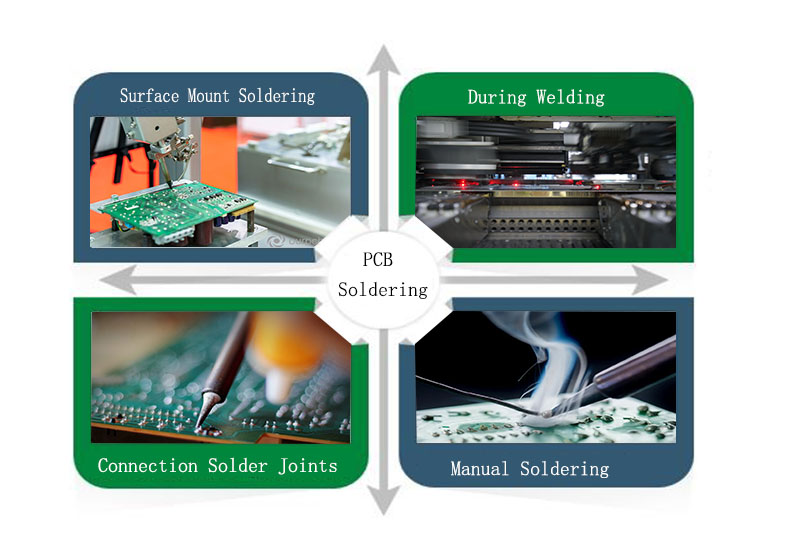
1. Soldering iron
You should choose the size and shape of the tip that best suits your printed circuit board welding project. Tip replacement should be done when the iron is cold and not plugged in.
Common soldering iron tips mainly include knife heads, flat heads, horseshoe heads, pointed heads, etc. These heads are divided into these 4 types: internal heat type, external heat type, high-frequency welding iron head, and integrated head (such as JBC, T12)
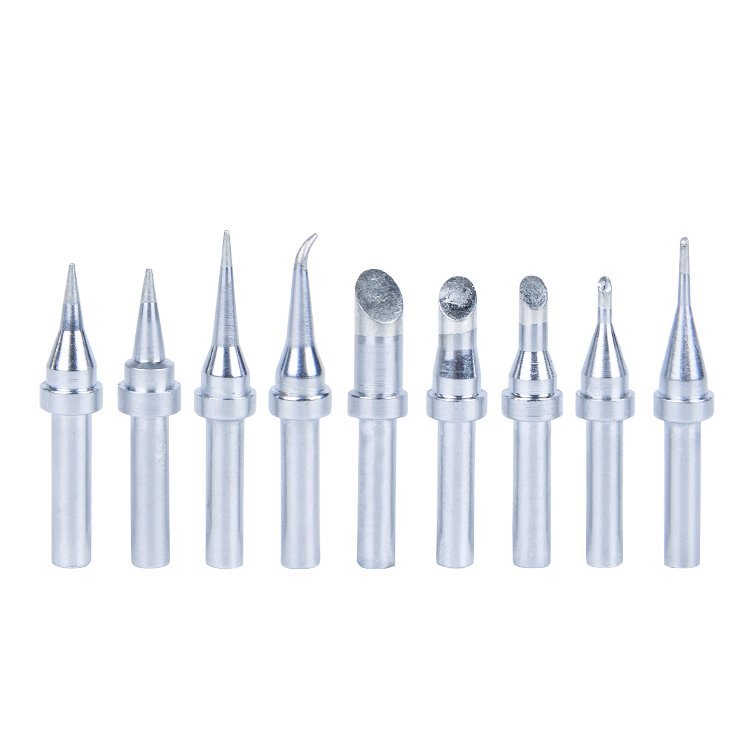
Good tools can make PCB board soldering more effective. Generally, I will choose a suitable soldering iron tip according to the soldering needs, so that the solder can fully infiltrate and form a good weld.
2. Solder
Solder is a mixture of tin and lead. The most common solder types are 60/40 (60% tin and 40% lead) and 63/37 (63% tin and 37% lead). Solder is the filler material in solder joints.
The solder used to solder circuit boards comes in two forms: solder wire and paste. Solder wire is coiled on a spool. Solder wire sizes used in electronics range from 0.010”-0.050” (0.25mm-1.27 mm).
First: Refuse low-temperature welding
Soldering temperature: Usually the heat is transferred to the inside of the printing circuit board, and the temperature exceeds the allowable range of the PCB board
PCB enthusiasts often turn the temperature of the welding station or soldering iron low! The temperature of the PCB solder joint is only 260 or 180 degrees to solder the PCB board and components, but this temperature is just enough to melt the tin. Low-temperature soldering, after the solder wire melts, the temperature is insufficient, it cannot form a good fusion with the pad and the pin, and cannot provide enough heat to ensure a reliable connection between the electronic component and the solder joint, which will lead to the weakening of the solder joint, The formation of bubbles or cracks, thereby reducing the quality of printed circuit board welding.
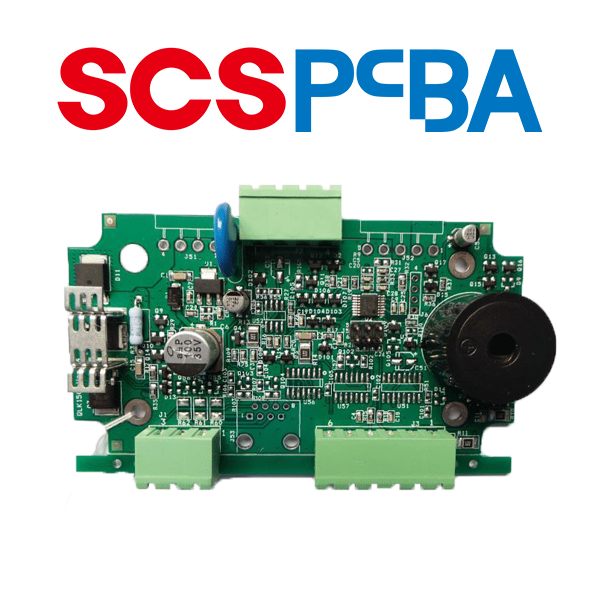
When doing PCB electronics or repairing PCBs, the temperature of the soldering station is usually around 330~350 degrees. At such a temperature, the moment the soldering iron and the solder wire are welded on the pad and the printed circuit board pin, a good fusion can be formed, which ensures the reliability of the soldering.
Second: Choose the right soldering iron tip for welding
For welding, the most taboo is to use one head from beginning to end, or never use other heads. Such welding is also wrong!
It is essential to use different soldering tips in the PCB soldering process, because each soldering tip has various shapes, sizes, designs, and contact areas, and the welding scenarios suitable for each welding iron tip are also different.
Horseshoe Heads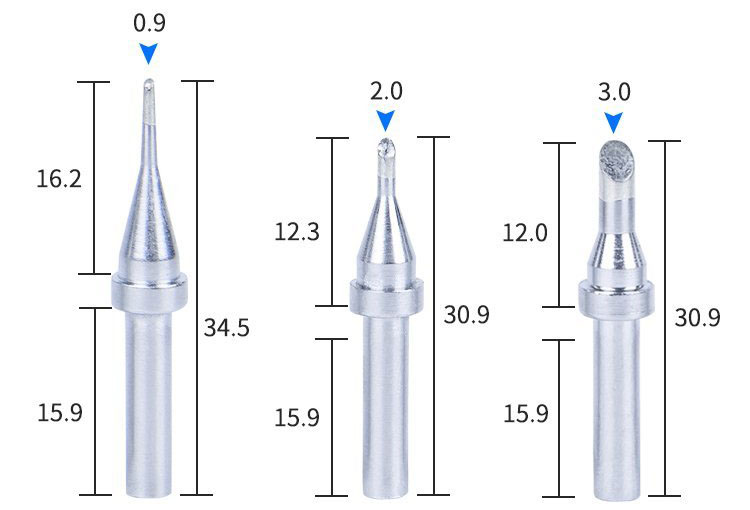
The horseshoe head is suitable for large PCB soldering areas, thick terminals, and circuit board printing solder joints.
Pointed Heads
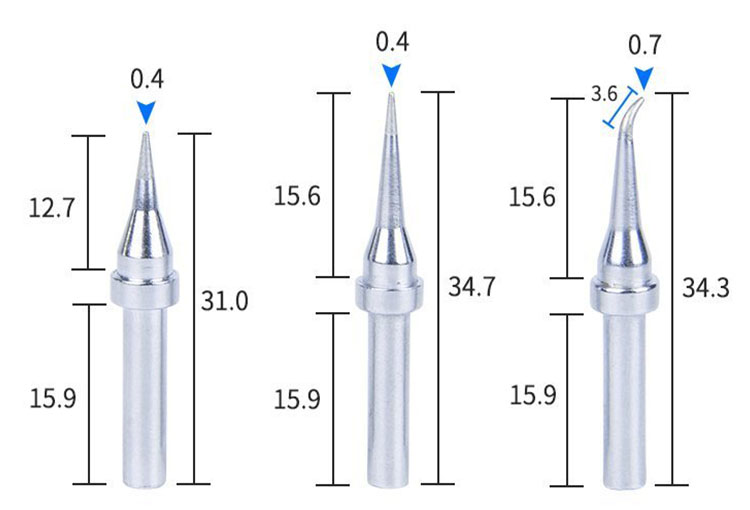
Pointed Heads are suitable for fine soldering, or where the welding space of the printing circuit board is small, and can also be used to repair the solder bridges generated when soldering pcbs
knife Heads

Knife Heads belong to the welding of multi-purpose PCB, suitable for welding of SOJ/PLCC/SOP/QFP/power supply, grounding components, correcting PCB tin bridge connectors, etc.
● A blade-tip soldering iron is suitable for most printed circuit board soldering tasks because the wider contact area of the PCB board can provide better heat transfer and stability. Bladed soldering irons are often used for soldering electronic components and small solder joints on PCBs.
● Horseshoe tips (also known as flat tips) are suitable for larger solder joints because they have a larger contact area, which can provide more heat conduction to the PCB board when it is soldered. For larger solder joints, more heat is required to heat and melt the solder quickly.
● For very pointed or curved tips, slightly increase the soldering station temperature. Due to the thermal resistance of the soldering iron itself, when the temperature is set to 300 degrees, the actual temperature transferred to the tip may only be about 260 degrees. By slightly increasing the temperature of the soldering station, you can ensure that the tip temperature reaches the desired soldering temperature, which makes the PCB more convenient when soldering.
In a word, choosing a suitable soldering iron tip is crucial for different PCB board soldering tasks and soldering materials. Understanding the characteristics and applicable scenarios of each soldering iron tip, and adjusting the temperature of the soldering station to suit different tips can improve soldering quality and efficiency.
Third: Maintenance of the iron head
The soldering iron tips currently on the market are plated tips to improve their durability and prevent oxidation. Therefore, methods such as knocking, filing, or using strong acid repair paste are not recommended, because these actions may damage the surface coating of the soldering iron tip, accelerate the oxidation and aging process, thereby reducing its life and performance.
To protect your welding iron tip and prolong its life, here are some suggestions:
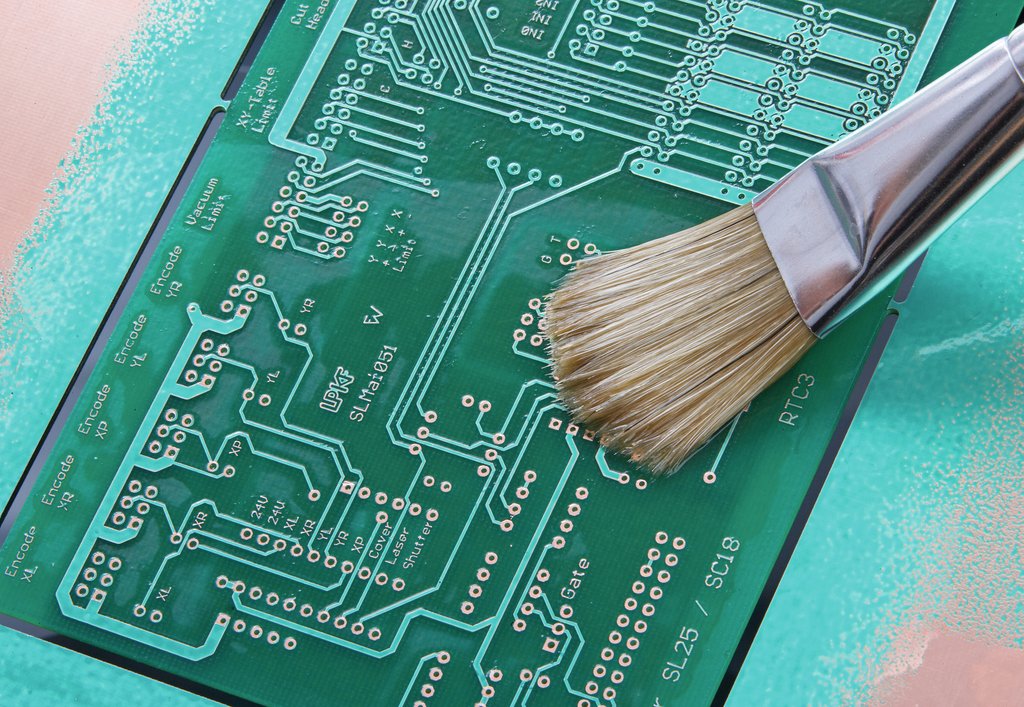
● Use the right tip
Choose the right tip for your specific soldering task, making sure its shape, size, and design match the task.
● Temperature Control
Make sure to use the proper temperature setting and avoid getting too hot or too cold to prevent tip damage.
● Cleaning and maintenance
Clean the tip of the soldering iron regularly, use a damp sponge or special soldering iron cleaner to remove welding slag and oxides.
● Storage method
The welding iron tip that is not tinned should be replaced in time, or use a neutral flux such as 559, which can prolong the service life of the soldering iron tip. When not in use, keep the tip in a dry, well-ventilated place away from moisture and corrosive substances.
